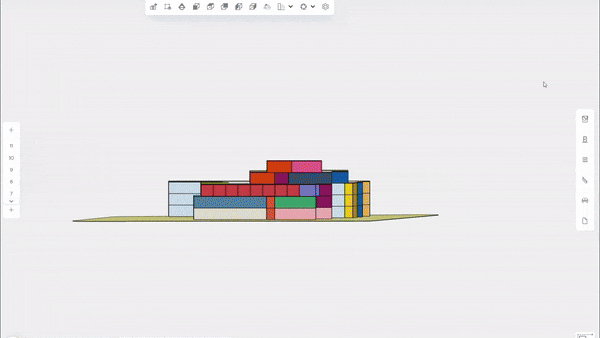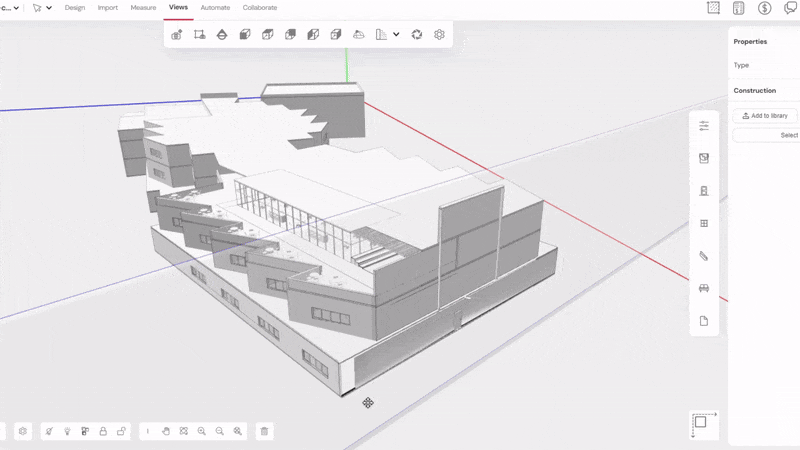
From ink drawings on tracing paper to highly detailed 3D digital models, the role of the architect has evolved and next-generation design software is empowering today’s architects with valuable data and design flexibility. In the past, the work was meticulous and required great manual effort, with each line and detail drawn by hand using rulers and other tools. Over time, programs like Revit revolutionized the area by allowing the creation of precise and digitally organized drawings, simplifying edits and component replication.
Architects still faced significant inefficiencies, particularly when making a single change that required updates to multiple drawings. For example, adjusting the height of a step by just 1 centimeter would mean modifying countless lines, hatches, and details across all relevant sections, elevations, and floor plans. This process was not only time consuming, but also increased the risk of errors, complicating workflows and project coordination. Although the shift from paper to digital drawing offered advantages, it maintained many of the limitations of two-dimensional representation. Projects continued to rely heavily on plan views, with complete spatial understanding often requiring a level of interpretation that was difficult for clients and stakeholders to understand.

BIM and beyond: how 3D tools are transforming architectural practice
With the arrival of 3D modeling tools and, more recently, Building Information Modeling (BIM), design practice has gained a new dimension – literally. It became possible to not only visualize the space in a more realistic and complete way, but also integrate crucial information about materials, costs and performance directly into the model, transforming both the creative process and construction management. In fact, BIM software has transformed the design landscape by addressing many of these limitations. By creating a comprehensive 3D model that automatically generates 2D and 3D drawings, BIM has simplified workflows, reduced errors, and made design changes instantaneous in every view. It also integrated valuable project data, such as material costs and performance, directly into the design, offering a more holistic approach to architecture.
It is important to emphasize that 2D and 3D are not competitors, but rather allies in the design process. 2D stands out for its simplicity and speed, making it ideal for initial sketches of plans and structures, as well as facilitating the production and sharing of ideas between professionals and clients. As projects gain complexity, with intricate facades and irregular shapes, 3D offers the necessary precision and clarity, providing a more detailed and realistic spatial vision. Together, they create an integrated approach that optimizes communication, speeds up iterations, and ensures more informed decisions throughout project development.

While BIM has greatly benefited the architecture, engineering and construction (AEC) community, there have been calls from professionals for faster innovation in tools like Revit. In 2020, an open letter from several leading architecture firms highlighted opportunities for improvement, particularly in areas such as cost, performance and interoperability, urging Autodesk to continue advancing Revit to better align with the evolving demands of complex projects. Since then, these discussions have played a constructive role in guiding software development, leading companies to focus on providing more flexible, collaborative, and efficient solutions tailored to the needs of the AEC industry, and this feedback has contributed to ongoing efforts to refine tools that help professionals manage increasingly sophisticated project and design workflows.
Facing industry challenges
This search for improved solutions and refinement of existing tools led to the creation of Snaptrude, a cloud-based 3D conceptual design platform. Combining the intuitive drafting experience with powerful BIM capabilities, it allows architects, interior designers and stakeholders to collaborate seamlessly in real-time via a web browser. With its user-friendly interface, Snaptrude makes the journey from initial sketches to detailed BIM models smooth and engaging. This integration facilitates the design of smart spaces with parametric modeling, automates processes such as generating bills of quantities (BoQs) and even performs daylight simulations, all without the need for multiple software tools.
Especially valuable during the early conceptual stages, the tool allows users to incorporate data such as site topography, climate considerations, and cost analysis from the outset. Whether working on large-scale projects like mixed-use towers or more specific developments like educational facilities, Snaptrude helps streamline the flow between creative design and data-driven decisions. This platform fills the gap left by BIM software, improving collaboration through real-time updates, preventing data loss and enabling clear communication between project teams.

By addressing the pain points expressed by the AEC industry, Snaptrude stands out as a modern solution that promotes efficiency and collaboration. While 2D will always have a place in architecture, 3D is essential to moving the industry toward a more integrated, immersive, and collaborative future.
#Flat #Designs #Arent #Dimension #Todays #Collaborative #Architecture